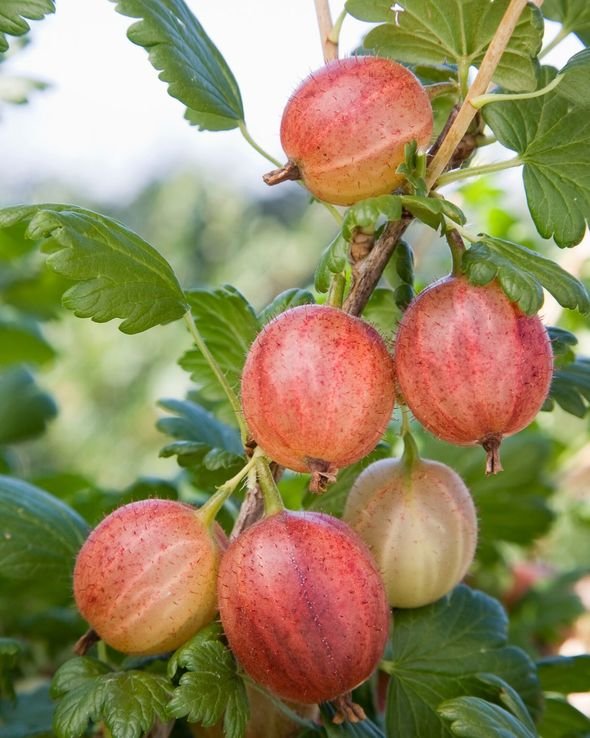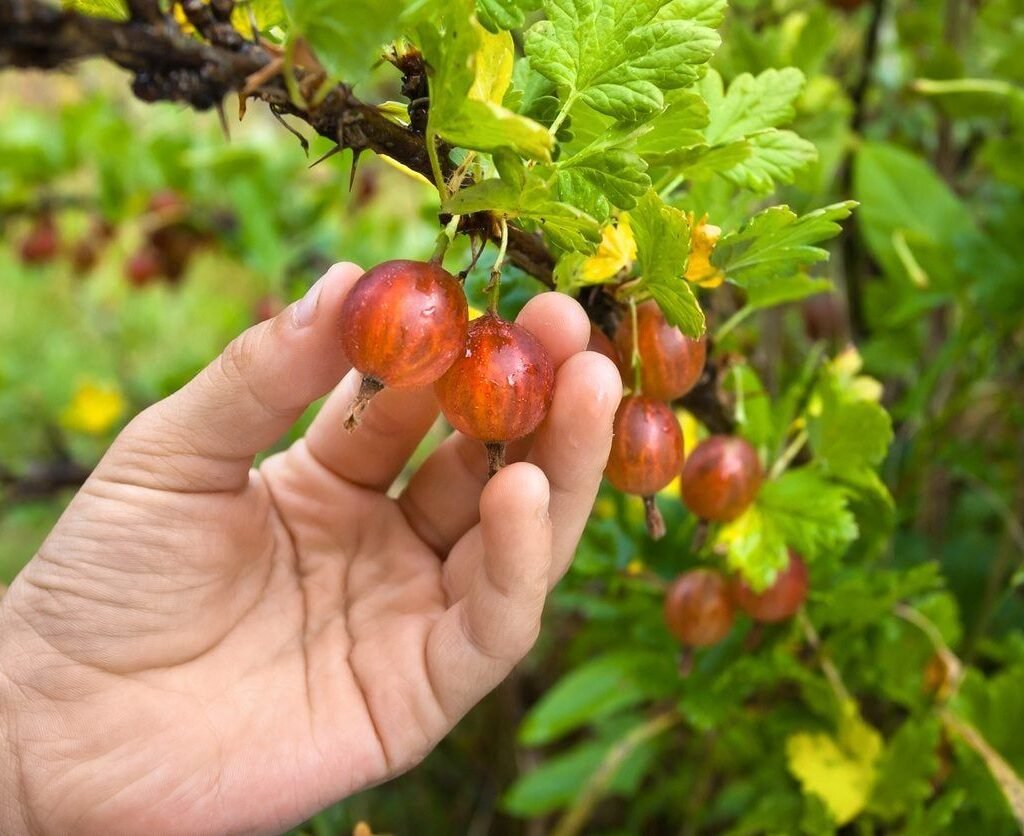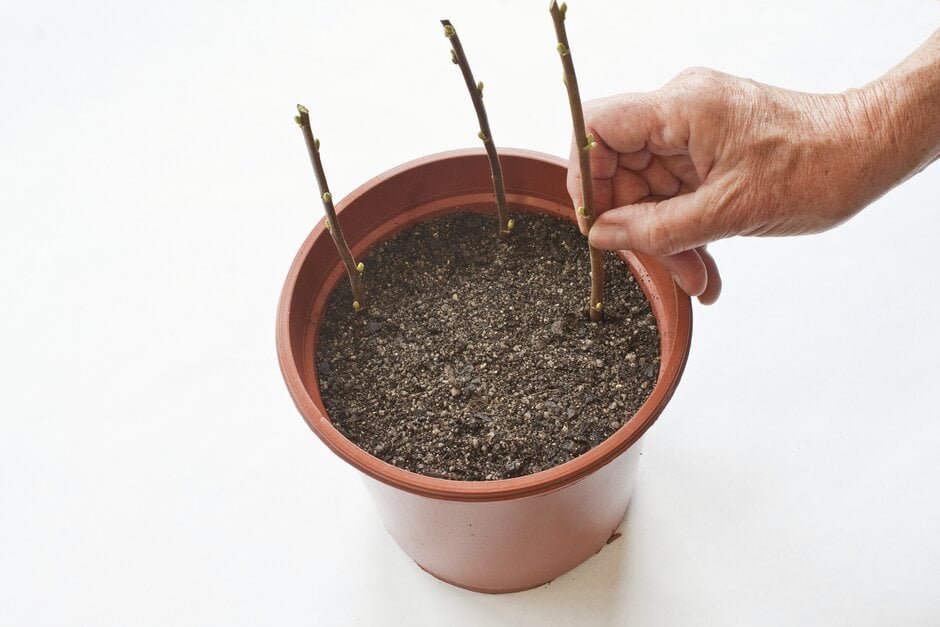Growing your own fruit bushes is one of the most rewarding experiences for home gardeners—especially when you can propagate them yourself from cuttings. Among the many hardy fruit plants, the red gooseberry stands out as a perfect choice for cold-weather gardeners. With its tart, ruby-colored berries, compact growth, and impressive resilience to frost, the red gooseberry thrives even in places like Alaska, where short summers and long winters can challenge most fruit crops.
Inspired by the YouTube video “Red Gooseberry Cuttings / Gardening in Alaska,” this post will walk you through everything you need to know about propagating red gooseberries from cuttings, caring for them in cold climates, and ensuring a healthy, productive bush for years to come. Whether you’re an Alaskan gardener or simply living in a cooler region, this guide will help you master the art of gooseberry propagation and enjoy a bounty of fresh, tangy fruits every summer.
What Makes Red Gooseberries Special?

Red gooseberries (Ribes uva-crispa) are hardy shrubs known for producing clusters of small, tart berries that ripen to a deep red hue. They’re loved for their versatility—great eaten fresh, made into jams, or baked into classic desserts like gooseberry pie.
Here’s why gardeners, especially in northern climates, love red gooseberries:
- Cold-Hardy: They can withstand freezing temperatures down to -40°F, making them ideal for places like Alaska or northern Canada.
- Compact Size: Perfect for container gardening or small garden spaces.
- Productive: Even a single bush can yield several pounds of fruit each summer.
- Low Maintenance: Once established, they require minimal care and produce reliably for up to 15–20 years.
In short, gooseberries are a must-have for gardeners who want reliable fruit production with minimal fuss.
Understanding Propagation: Why Use Cuttings?

Growing red gooseberries from cuttings is one of the simplest and most reliable ways to propagate the plant. It ensures you get a true-to-type clone of the parent plant—meaning the same fruit quality, color, and disease resistance.
Other benefits of propagation through cuttings include:
- Faster establishment compared to growing from seeds.
- Guaranteed consistent fruit characteristics.
- Cost-effective—you can create multiple new plants from a single bush.
Gooseberries can be propagated from either softwood cuttings (taken in spring/early summer) or hardwood cuttings (taken in late fall or winter). In Alaska or other cold climates, hardwood cuttings are the best choice since they can root indoors during the colder months before being transplanted outdoors in spring.
When to Take Red Gooseberry Cuttings

Timing is crucial for successful propagation. In Alaska or similar regions, the best time to take cuttings is during late fall to early winter, once the plant has gone dormant but before severe frost sets in.
If growing indoors or in a greenhouse, you can also take softwood cuttings in early summer when new shoots are still flexible but mature enough to root.
How to Take and Prepare Gooseberry Cuttings

Here’s a step-by-step guide for collecting and preparing your red gooseberry cuttings:
1. Select a Healthy Parent Plant
Choose a mature, disease-free gooseberry bush with strong, healthy canes. Avoid taking cuttings from old or diseased branches.
2. Choose the Right Stems
For hardwood cuttings, select one-year-old shoots that are firm and woody, roughly the thickness of a pencil.
3. Cut the Stems Properly
Using clean, sharp pruning shears, cut 8–10 inch sections of stem.
- Make the bottom cut just below a bud.
- Make the top cut about 1 inch above a bud.
4. Remove Lower Leaves and Thorns
Strip off any leaves or thorns from the lower half of the cutting to prevent rot and make room for root growth.
5. Dip in Rooting Hormone (Optional but Recommended)
Dip the cut end in a rooting hormone powder or gel. This encourages quicker root formation and higher success rates.
Planting the Cuttings

You can root gooseberry cuttings either in pots indoors or directly in garden soil, depending on your climate and available space.
For Indoor Rooting (Perfect for Alaskan Winters):
- Fill pots or trays with a mix of 50% peat moss and 50% perlite or sand.
- Insert each cutting about halfway into the medium.
- Water thoroughly and cover the container with a clear plastic dome or bag to maintain humidity.
- Place in a bright, cool area (around 60°F) but out of direct sunlight.
- Check weekly to ensure the soil remains moist but not soggy.
Roots typically begin forming within 4–8 weeks.
For Outdoor Rooting (Milder Regions):
- Choose a sheltered, frost-free spot with well-drained soil.
- Insert cuttings into the ground at a 45-degree angle, leaving the top bud above the soil.
- Cover with mulch to protect from temperature swings and retain moisture.
By spring, your cuttings should have developed roots and started showing new growth.
Transplanting Rooted Cuttings
Once your cuttings are well-rooted (usually by late spring), they’re ready to move into larger pots or directly into the garden.
Steps:
- Choose a sunny or partially shaded spot.
- Space plants about 3–4 feet apart to allow airflow and growth.
- Dig holes large enough to accommodate the roots.
- Plant the cutting slightly deeper than it was growing before to encourage new shoots from the base.
- Water thoroughly and mulch around the base.
Soil, Watering, and Fertilizer Tips
Soil:
Gooseberries thrive in well-drained loamy soil with a pH between 6.0 and 6.5. Mix compost or aged manure into the planting area for a nutrient boost.
Watering:
- Keep soil consistently moist, especially during the first year.
- Avoid overwatering—too much moisture can cause root rot.
- In greenhouse or container setups, check pots frequently, as soil dries faster indoors.
Fertilizer:
- Apply an organic, slow-release fertilizer in early spring.
- Top-dress with compost each year to improve soil structure and fertility.
Pruning and Maintenance
Pruning helps maintain plant shape, encourages fruiting, and prevents overcrowding.
- First Year: Let the plant focus on root development—avoid heavy pruning.
- Second Year Onward: Prune in late winter or early spring, removing dead or weak canes. Keep about 8–10 strong branches evenly spaced.
- Rejuvenation Pruning: Every few years, remove older stems to encourage new, productive growth.
Protecting Gooseberries in Cold Climates
In Alaska’s extreme winters, proper protection ensures survival and productivity.
- Mulch Heavily: Apply a 3–4 inch layer of straw, leaves, or wood chips around the base before winter.
- Wind Protection: Use windbreaks or plant near fences to shield from cold gusts.
- Snow Cover: Snow acts as insulation—don’t clear it away from your plants.
- Container Plants: Move pots into an unheated garage or greenhouse during winter to prevent root freezing.
Gooseberries are tough plants, but these precautions can make all the difference in regions where winters are long and severe.
Harvesting Red Gooseberries
You’ll usually get your first crop in the second or third year after propagation. Harvest time depends on your region, but in Alaska, it typically occurs between mid to late summer.
When to Pick:
- For cooking or preserves: Pick while slightly under-ripe (firm and tart).
- For fresh eating: Wait until fully red and soft for a sweeter flavor.
Always harvest carefully with gloves—the thorny branches can prick your fingers!
Common Pests and Problems
Even in colder climates, gooseberries can face a few challenges:
- Aphids: Spray with insecticidal soap or neem oil.
- Powdery Mildew: Improve air circulation and avoid overhead watering.
- Sawfly Larvae: These pests can strip leaves quickly—handpick them or apply organic BT spray.
Good sanitation—like removing fallen leaves and debris—helps prevent most diseases.
Final Thoughts
Growing red gooseberries from cuttings is not only simple but deeply rewarding. From a few well-prepared branches, you can develop a thriving patch of fruit-bearing shrubs that will last decades—even in the harsh conditions of Alaska.
Their cold tolerance, low maintenance needs, and tangy, jewel-like berries make them one of the best fruit crops for northern gardeners. Whether you’re propagating indoors during winter or planting rooted cuttings outdoors in spring, the process is straightforward and yields beautiful results.
So, the next time you see a healthy red gooseberry bush, don’t just admire it—take a few cuttings, nurture them through the cold months, and soon you’ll have your very own mini-orchard of these hardy, delicious fruits right at home.






Leave A Comment